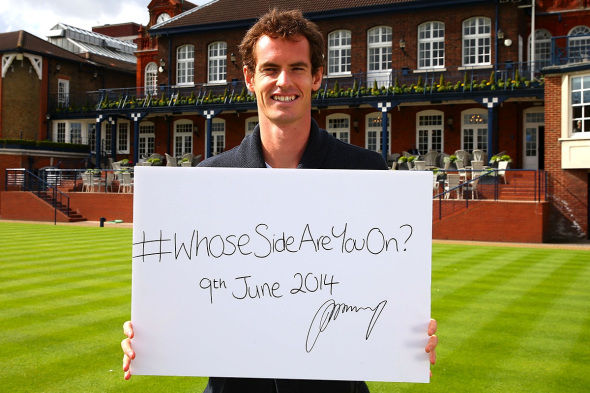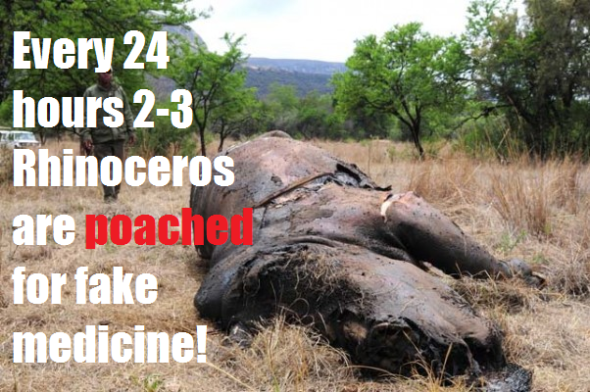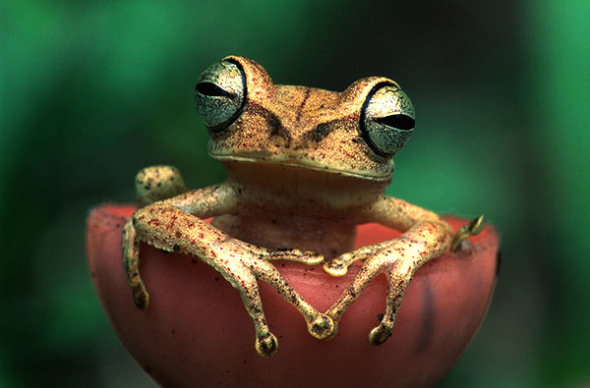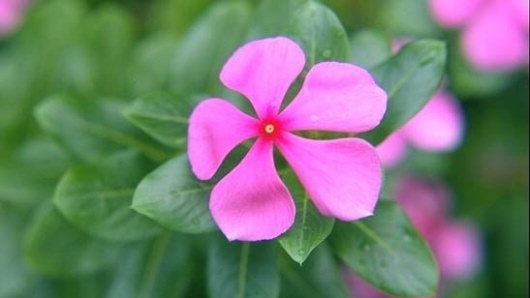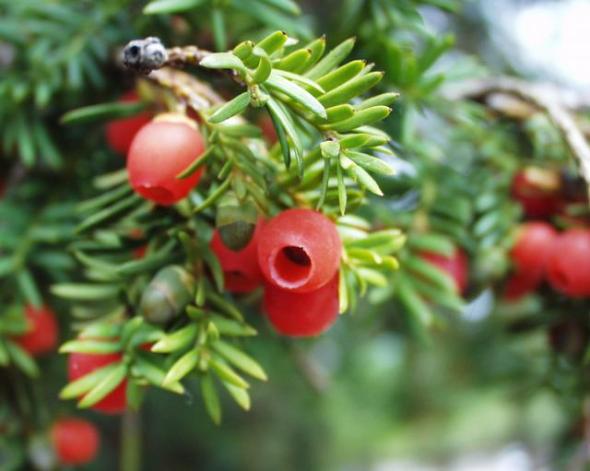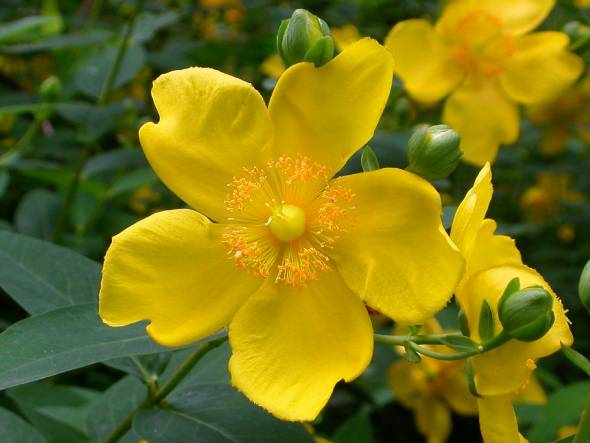Rhino War and Photography
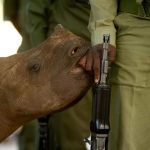

Rhino poaching within Africa has reached yet again an all time new high with a total of some 543 Rhinoceros poached dead for Traditional Chinese Medicine. Even with vast awareness campaigns, increased border patrols, upping Anti Poaching and funding the killing continues. Will it ever end? how long is a piece of string?
From the 30th June 2014 the (DEA) Department Of Environmental Affairs (South Africa) issued their Rhino poaching statistics of which was then 496. Since then a further 50+ have been bludgeoned leaving many people feeling hopeless, let down by their government, and debating on whether it is really a practical choice to support a trade in Rhino horn.
Poaching statistics for 2014 have again beaten records for the years 2010-2011. For both years, poaching statistics for 2010 were 333 poached Rhino and for the year 2011 we saw a total kill rate of 448. Poaching statistics for 2012 look as if they are most likely going to be beaten by this years June-July figures too that saw a total of 668 Rhinoceros poached in cold blood.
On a positive note arrest rates are also allegedly increasing from last year that saw a sky-rocketing 1003 Rhinoceros poached. Increased arrest rates doesn’t necessarily mean we are winning the battle, it merely shows that more and more poachers are encroaching from over the border into South Africa. 2010 saw a total of 165 poachers arrested, 2011 - 232, then in 2012 a total of 267 poachers were arrested, 2013 arrest rates shot up of which a total of 343 Rhino poachers were arrested. For June-July 2014 a total (estimate) arrest rate sees some 141 arrested. So 1148 poachers have been arrested yet we have only seen a handful of these poachers actually charged, brought to justice and convicted.
Its hard to actually believe too that Rhino horn made up of almost the same identical properties as human hair, finger nails, horse hoof, and parrot beak is selling illegally on the black market for a whopping $65,000kg whereas gold sells for a mere $43,000 kg and cocaine illegally trading at some $20,000 kg. Demand is not decreasing and while demand increases so will poaching and as explained there seems to be no end of the onslaught insight.
A powder made from the horns is prescribed in traditional Chinese medicine to cure fever and convulsions, but the substance is now used as a status symbol and a very expensive way for affluent Vietnamese to cure hangovers or, supposedly, to get high—even though the horns are composed of the common material keratin and have about the same psychoactive effects as snorting a fingernail clipping.
By weight, the horns go for anywhere from $60,000 to $100,000 per kilogram—single horns are about 3.5 kg, on average—making the substance significantly more pricey than other ubiquitous status symbols and intoxicants. Indian Rhino horns are still the most sought after and pricer too. International Animal Rescue Foundation Africa spoke with their Indian counterparts of which confirmed Indian Rhino horn is illegally trading for $80,000 kg. The reason for such high price is mainly due to the Indian Rhino’s endangered status. South Africa is home to about 75% of the world’s 29,000 rhinoceroses, but if the country can’t stop the poaching, it may lose that status, said Naomi Doak of the wildlife monitoring network, Traffic. “We are going to reach the tipping point for rhinos,” she told the BBC. “By the end of 2014, we’re starting to be in the negative in terms of deaths and poaching outstripping birth, and the population will start to decline very quickly.”
Trade in Rhino horn is outlawed by the United Nations Convention on International Trade in Endangered Species, but some argue that the best way to undercut black market horn trade is to give it competition in the form of a well-regulated, cheap and legal market for cultivated horns. Rhino horns can be removed harmlessly and regrow—so legalizing the trade could facilitate horn farming that doesn’t harm the animals. Others argue that such an option would encourage misconceptions about the medicinal properties of ingesting the horn and overwhelm the market with demand, allowing poachers to simply coexist with legal trade.
The South African government acknowledges that something has to change. The country’s minister of environmental affairs, Edna Molewa, said that government officials have been meeting to consider “a proposal for the legalization of commercial international trade” to be brought up at the next Convention on International Trade in Endangered Species meeting in 2016. Whilst many are arguing and debating on whether a legalised trade should be opened International Animal Rescue Foundation Africa and Asia are still venomously against such trade of which will kick all conservation efforts backwards. We’re basically giving into the Asian using community should trade be made legal, we’ve fought for so long and provided evidence that clearly shows Rhino horn has no medicinal active properties.
By giving in and should trade not work there us no going back and we will most certainly lose our ionic species the second largest land mammal. According to government statistics, a great majority of Rhino poaching occurs at Kruger National Park, the largest game reserve in Africa, covering 19,000 square kilometres. At the reserve, hunters and those who are impoverished slip through the park’s borders to kill and de-horn Rhinos, earning the equivalent of a typically monthly wage in a single night. Though Kruger has hired soldiers and dogs to stand watch against poachers, they cannot efficiently patrol all of the park’s land. However, when rangers or soldiers do come into contact with poachers, a shoot-out often occurs, with poachers regularly getting killed in a skirmish with security staff. And were not just talking about any reserve here that to some may sound quite easy and straightforward to patrol. Kruger National Park is the size of Israel covering a massive 19,485 kilometres square.
In Nov. 2011, two rangers spotted poachers who were tracking a white Rhino at Ndumo Game Reserve. When the rangers ordered the men to lower their weapons, the poachers, instead, pointed their guns at the rangers and shot. The shoot-out eventually led to the apprehension of one poacher and the death of another, Erasmo Mazivele. Astonishingly, the magistrate, who ruled over the court case in June 2013, convicted the apprehended poacher, Wawito Mawala, with murdering his accomplice, even though it was the rangers who killed Mazivele. The magistrate stated that Mawala had been the cause of Mazivele’s death because Mawala had knowingly put the Mazivele’s life in danger.
The placement of security at game reserves and the persistence of rangers have been positively helping the fight against Rhino poaching. According to the Game Rangers Association of Africa, within the first four months of 2014, 96 low-level Rhino poachers have been arrested. However, not all law enforcement assigned to protect these Rhinos can always be trusted. There have been numerous cases where rangers assigned to guard reserves have been found aiding poachers. This has always been a major concern to International Animal Rescue Foundation Africa of which is strictly monitoring where they place funding too and where equipment is sent, the risks are high, corruption is rife and where a months wages can be made in a day the urge to cross that line and illegally slaughter or aide poachers is tempting to rangers that are barely paid a weeks salary for a months work.
Though the majority of Rhino poaching occurs at Kruger, smaller reserves have also been affected. Poachers have hunted in a variety of game reserves, leaving behind mutilated carcasses of Rhinos, with their horns hacked out of their heads, their eyes gouged out, and their genitalia and ears cut off. To make matters worse, new hunting methods and high-calibre weapons have been developed to make the poaching of these 900 kg animals easier. Helicopters, high-powered rifles, tranquillizer guns, veterinary drugs and night vision goggles have all been used. Since Edna Molewa ordered a “restriction” of Entorphine (M99) back in 2012 there has been quite a large reduction of Rhinos being poached using tranquillizer guns and M99.
Unfortunately the poachers are fighting back. The eyes and and ears of the African skies the Vulture has been targeted viciously by both Rhino and Elephant poachers using cyanide or diclofenac a NSAID anti-inflammatory that is normally used within human and veterinary medicine to reduce skeletal inflammation. Vultures would normally be the first alerting sign to law enforcement on the ground of a dead carcass or seriously injured Rhino that is haemorrhaging profusely.
Have we lost the battle though>? it seems not, nor are we going too. This month has seen more people such as high ranking celebrities and wildlife photographers taking up awareness campaigns or helping to reduce Rhino poaching through whatever means they can. Rhino horn smuggling and selling is transnational and worth millions of dollars, causing the rise in Rhino poaching to only increase throughout the years.
However, in response, in 2012, South African and Vietnamese governments signed a treaty increasing enforcement of hunting bans to deal with Rhino poaching and other conservation issues. The two governments have since been sharing information to clampdown on offenders. Their goal is to disrupt Rhino smuggling transit routes from Africa to Asia.
Celebrities have also played a huge part in Rhino horn awareness, Prince William, David Beckham and Yao Ming teamed up with WildAid to create a series of public service announcements (PSAs), aimed at China and Vietnam, urging people to not support the trading of illegal wildlife. In the first video, the trio focused solely on the ever decreasing population of rhinos due to poaching.
WHEN THE BUYING STOPS THE KILLING CAN TOO!
PLEASE TELL YOUR FAMILY AND FRIENDS NOT TO BUY RHINO HORN, IVORY OR SHARK FIN!
David Beckham and the Duke of Cambridge Prince William team up to protect our mega fauna;
Back in June Prince William and soccer legend David Beckham teamed up to launch a campaign that aims to protect animals from illegal poaching. The Duke of Cambridge, who is also the president of United For Wildlife, promoted the new hashtag #WhoseSideAreYouOn while flanked by Beckham and other star athletes at Google Town Hall in Central London.
“The illegal wildlife trade is responsible for the slaughter of tens of thousands of animals a year, pushing some of our most beloved species to the brink of extinction,” William said. “Our children should not live in a world without elephants, tigers, lions and rhinos. Enough is enough. It is time to choose between critically endangered species and the criminals who kill them for money.”
The #WhoseSideAreYouOn campaign aims to reach people via Twitter, Facebook, Google Plus and You Tube. Supporters will also be urged to participate in or watch United For Wildlife sports events. In anticipation of the launch, William posed alongside his brother Prince Harry for a photo posted to United For Wildlife’s Twitter account. The brothers held a sign that bore the campaign start date of June 9, as well as their royal signatures that can be seen below along with Tennis Champion Andy Murray.
While there are many celebrities now taking up the fight to protect our critically endangered wildlife species there are also the likes of Hilary O’Leary a Zimbabwean wildlife photographer that has been creating awareness of the Rhino poaching epidemic. Miss O’Leary entered a stunning picture of a baby Rhino calf into the Wildlife Photographer of the Year award back in June 2014. Entered into the Natural History Museum (WPY) Award Hilary O’Leary explains in her own words to Dr Josa Depre what inspired her to enter this particular photograph into the award - The interview can be seen below;
Picture Hilary O’Leary
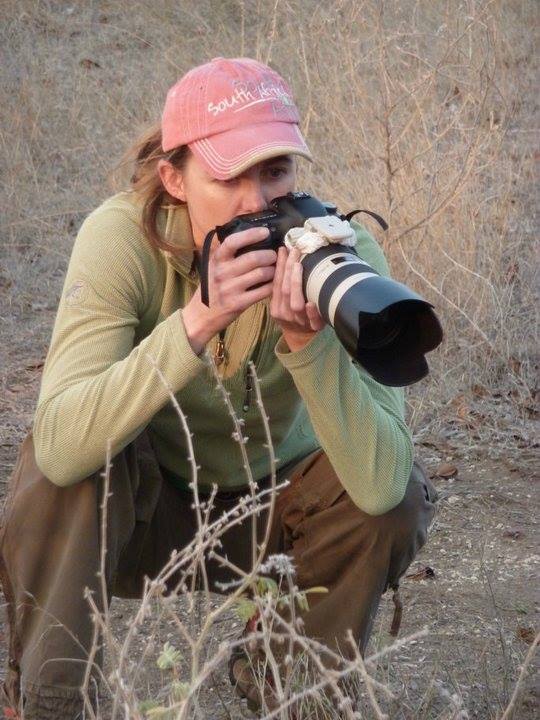
An interview with Hilary O’Leary - Hilary O’Leary has entered one of her stills into the Natural History Museum - Wildlife Photography of the Year Award that has since we published seen an unprecedented amount of support from the public voting in their droves. Please scroll down to view the image, click on the picture and please vote.
Josa - When did you become interested in photography?
Hilary O’Leary - I am fortunate to live in a place which has the most magical things to see and about 3 years ago I realized there was so much more to see when you change the way you view things.. I would say my first interested in photography was about 5 months after I started taking wildlife pictures.. when all of a sudden I felt that wonderful feeling of capturing a great
image. Only then could I see the difference between taking pictures and
photography.
Josa - What’s been your most worked on project and what obstacles did you have to overcome in concluding that particular project?
Hilary O’Leary - My photography is purely a hobby and the only project I could assign to have had has been two or three Photography competitions. So no obstacles yet.
Josa - Whom inspired you to become such a professionally outstanding photographer? I state outstanding as I have viewed some of your past work and you have a great eye for detail.
Hilary O’Leary - I would say I know what I like and have admired and recognized styles throughout all Wildlife Photographers work I have witnessed. I would say the feeling you get when you look at some pictures is what inspires me most.
Josa - I can see you have quite a fondness for African Rhino, do you intend on using your work to fund Rhino projects such as anti-poaching or funding orphanages?
Hilary O’Leary - Yes I love Rhino, only when you have a chance to spend time with them to you realize how innocent and gentle they are. I want to help in anyway I can.
Josa - Rhino poaching has for this year drastically overtaken previous records from 2010, 2011 and 2012 with a near 600 Rhinos slaughtered for fake medicine. How does this make you feel knowing that we could soon see the second largest land mammal banished from the face of the earth and do you have any projects to help sustain Rhino preservation?
Hilary O’Leary - The feeling is - desperate. I can’t help but think the next generation will spend all its resources repairing the damage… But I believe we can make a difference and we will win.
Josa - Can you please explain to our readers what inspired you to take this particular photograph and what sentimental value it has to you?
Hilary O’Leary - The picture was quite incidental as I was driving past and saw a scene.. I only saw what I had captured when I downloaded the images… and the message was so strong. I felt it fitted ” a picture says a thousand words” connotation perfectly.
Josa - Environmental News and Media, Speak up for the Voiceless and International Animal Rescue Foundation Africa have been hosting a youth photography group on-line for the past two years. Do you have any advice, skills or information you’d like to provide to our younger readers that are currently actively involved within youth photography and wildlife preservation?
Hilary O’Leary - I can only say the world is in our hands and there are enough of us to make a difference. I love a quote a read in a different context about training but would like to re-use it here in the war against anti-poaching - its like fighting with a lion… you don’t stop when your tired you stop when the lions tired. We all respond to an image and a single flash of one can stay in our minds
forever… capturing the right images keep the moment real forever and that can change lives!
Josa - What camera and exposure did you use to take this photo pictured above and how long did you have to wait to obtain that pure brilliant shot?
Hilary O’Leary - I use Canon, and it was early morning so light was a little low… 1/200, f2.8
Josa - You have entered this particular piece into the wildlife photography of the year award and since we have published this onto our pages and now ENM site it has generated hundreds of votes and many thousands of shares and likes. Will you be planning on furthering your career outside of your home country Zimbabwe and if so what areas do you plan on working on?
Hilary O’Leary - I have not thought about it… will see what opportunities arrive.
Josa - What’s been your proudest moment in life during this career of photography and why?
Hilary O’Leary - Well it would have to be the current situation, a picture that has created such a wonderful, strong response and a message that has been received correctly.
Josa - On viewing your work past and present I can see that a great deal of patience has gone into perfecting that best shot that has won the hearts and minds of many. Can you describe to our readers just how long it takes you to obtain such outstanding stills, the work that goes into obtaining that perfect still, and how many days and nights have you worked on just one single project?
Hilary O’Leary - I think the time has been spent in recognizing, out of the thousands of images I have taken, which one had the special message. Hours of editing, deleting and searching for a great image..
Josa - What’s been your worst downfall within your career of photography?
Hilary O’Leary - Can’t think right now… I hope its not yet to come either!
Josa - Where do you see oneself in ten years time and do you plan on keeping this amazing work up?
Hilary O’Leary - I hope I will have managed to make, support or assist in the changes we are desperate to see. I hope the success can be measured over years and decades to come. . I hope in 10 years we still have the animals that are so critically endangered.
End of interview.
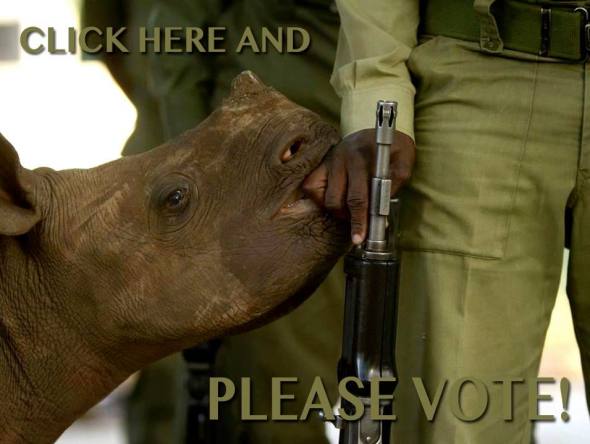
Hilary O’Leary met this little black Rhino whilst spending time at the Malilangwe Conservation Trust in Zimbabwe. The Rhino’s story, however, is not as sad as it might seem. His mother is alive and they are protected by the trust. This image is part of our first ever People’s Choice Award. Since publishing the Hilary O’Leary’s still via our Facebook, Environmental News and Media sites there has been a whopping amount of public support.
People in their thousands have liked and hundreds more have set about voting too. Please don’t forget to vote by clicking on the photo above or by clicking the link here please remember that the closing date for voting is 5th September 2014. Please share this article and ask your friends and family to vote too. The more awareness created of our endangered species the more support can be generated hopefully securing their future furthermore.
Meanwhile in Zimbabwe it has been alleged that Rhino poaching has decreased and Zimbabwe’s Black Rhinoceros population has increased too. The Ministry of Environment, Water and Climate has revealed that there has been a significant drop in Rhino poaching between 2010 and 2013. The African rhino has continued to attract the world’s attention with fears the species might become extinct due to poaching.
In an effort to raise awareness on the need to protect the Rhino species, the country has carried several awareness campaigns. In a speech read on his behalf during the launch of a 500km Rhino Awareness Walk, Minister Saviour Kasukuwere said 52 Rhino were killed in 2010, but the number went down to 38 in 2011 before further decreasing to 22 in 2012.
In 2013, only 16 Rhino were killed.
The black Rhino population has also been steadily increasing from 429 in 2011 to 457 in 2013. The white Rhino species has also increased from 279 in 2011 to 296 in 2013. A professional guide, Sam Nkomo will carry out a 500 kilometre walk from the Matobo National Park to Victoria Falls from the 14th to the 18th of September in a bid to educate communities on the need to preserve the country’s wildlife.
Zimbabwe Tourism Authority chief executive Karikoga Kaseke pledged $1000 towards Nkomo’s walk and urged the corporate sector to contribute towards wildlife conservation awareness programmes. Rhino are classified as endangered on the red list database of the International Union for the Conservation of Nature as their numbers are critically low. Zimbabwe developed a National Rhino Policy and Management Framework for the period 2011 to 2016 in March 2011 in an effort to increase the Black and White Rhino population.
Whilst Rhino poaching has been slowly decreasing in Zimbabwe President Barack Obama United States President has been lobbied by environmentalists to now place sanctions against Mozambique in an effort to curb Rhino and Elephant poaching in other African countries where poaching of both Elephants and Rhino is spiralling out of control. Investigators say substantial evidence exists of Mozambique’s failure to abide by international conventions against wildlife trafficking, including to back up allegations of state complicity.
While President Obama last year mounted a new initiative by the U.S. government to tackle international wildlife trafficking, with a particular focus on ivory, some say Mozambique’s actions are undermining those efforts – and threatening these species worldwide. A new petition, publicly announced that Wednesday, now provides evidence on the issue and urges the president to make use of legal authorities to encourage Mozambique to crack down on poachers.
“Mozambique continues to play an ever-growing and uncontained role in Rhinoceros and Elephant poaching,” Susie Ellis, executive director of the International Rhino Foundation, one of the petitioners, told IPS.
“Although they have been given direction by the international community to enact certain controls, those have been only superficial and have had no meaningful effect. If you look at the large-scale poaching and illegal trade in Rhino horn and Elephant ivory out of Mozambique, it’s directly undercut President Obama’s [efforts] on wildlife trafficking.”
Increasingly working hand in hand with organised crime, poachers over the past three years have killed record numbers of Elephants and Rhinoceroses, particularly in Africa. Some 50,000 Elephants are being killed each year in Africa, alongside 1,000 Rhinos, leaving perhaps as few as 250,000 Elephants in the wild globally.
Driving this illicit market is increased consumer demand in Asia, particularly in China and Vietnam. According to a U.N. report from last year, large seizures of ivory bound for Asia have more than doubled since 2009. The new petition focuses on the central international agreement around wildlife trafficking, known as the Convention on International Trade in Endangered Species (CITES), and warns that Mozambique’s outsized role in African ivory poaching is diluting the convention’s effectiveness. The CITES standing committee is meeting next week in Switzerland.
“Available evidence indicates that Mozambican nationals constitute the highest number of foreign arrests for poaching in South Africa. Organized crime syndicates based in Mozambique are driving large scale illegal trade in Rhino horn and Elephant ivory,” the petition states. (Please sign the petition by clicking the link to your left highlighted)….
“Given the scope and depth of the illegal killing and trade in Rhino and Elephant products by Mozambican nationals, we urge the United States to … enact substantial trade sanctions.”
High-level complicity
Supporters say that strong action by the Mozambican authorities would have a significant and immediate impact on the global supply of illicit ivory.
Officials reportedly estimate that 80 to 90 percent of all poachers in South Africa’s massive Kruger National Park are Mozambican nationals. Local groups say that on most nights more than a dozen separate poaching parties can be prowling the park, most from well-documented “poaching villages” located across the border in Mozambique.
Meanwhile, enforcement of wildlife-related legislation in Mozambique is said to be essentially non-existent, with penalties for poaching and trafficking thus far not effective. Yet changing that situation has been complicated by what appears to be state collusion.
“It’s impossible for that level of illegal activity to be going on without high-level complicity,” Allan Thornton, president of the Environmental Investigation Agency (EIA), a watchdog group based here and in London that co-authored the new petition, told IPS.
“We believe that there are ex-military officials who are providing political protection to the [trafficking] syndicates who are arming and funding these poaching teams. There is substantial evidence implicating both the police and military.”
Mozambique keeps strict control over the types of weapons used by the country’s poachers, Thornton notes, yet such weapons are available to the military. Similarly, police and military uniforms have repeatedly been found in poaching camps.
Thornton says that putting together the new petition took several months, due to the mass of evidence available.
“If all Mozambican citizens were prevented from illicitly crossing over the border, poaching would drop significantly. But there has been no enforcement on the Mozambique side, despite legal obligations under CITES,” he says.
“We believe that the Mozambique government should be held accountable for their activities and act rapidly against these poachers, criminal syndicates and those protecting them. They could close this trade literally in a week.
Unparalleled scope
Thornton says his office is not yet clear on whether the Obama administration has exerted diplomatic pressure on the Mozambique government over the issue of wildlife trafficking. But in filing the new petition, these groups are highlighting the fact that the president does indeed have the legal backing to act on the issue.
Under U.S. legislation known as the Pelly Amendment, the president is allowed to impose trade sanctions if a country is certified to be “diminishing the effectiveness” of an international conservation programme. (U.S. officials could not be reached for comment for this story.)
Further, there is notable precedent under which past determinations – set in motion by EIA petitions – have met with particular success. Two decades ago, for instance, a similar petition was lodged around the trafficking of rhinoceros and tiger parts through Taiwan into China.
That effort resulted in U.S. trade sanctions. Over the following two years, both the Taiwanese and Chinese governments engaged in a broad crackdown on these trades.
“This had a huge impact on reducing demand [for ivory] and reducing the poaching of Rhinos virtually around the world,” Thornton says.
“We saw Rhino populations stabilise worldwide, because two of the biggest markets had closed for demand. This is the same thing we’re now looking for in Mozambique.”
He continues: “And we’re hoping for a particularly prompt response, because the scope of illegal activities we’re currently seeing – where one country is sending hundreds of poachers into another country – is almost unparalleled.”
ALL OUT WAR!
International Animal Rescue Foundation Africa and many hundred more organisations are desperately trying to reduce the Scrooge of Rhino and Elephant poaching that is considered now a war. This war doesn’t just affect Africans or their wildlife. Black market trade of both ivory and Rhino horn is fuelling the trade in firearms and terrorism abroad and within the continent of Africa of which has to be tackled at top governmental level. International Animal Rescue Foundation Africa have been lobbying the United Nations and sent to all (CITES) signatories communications to now support an immediate call for sanctions against Mozambique, Vietnam and China for their failure to reduce both poaching and black market trade. Regardless of what many have stated would actually harm an already impoverished country something has to be done (sanctions must be implemented). While we know poaching and black market trade would decrease sanctions wouldn’t necessarily be spread out over a course of time. So in reality finical harm would be of the lowest. One has to look at it like this. If we lose the Rhino and Elephant, tourism that is a huge money generator would be significantly impacted of which would increase unemployment, crime and anti-social behaviour and leave South Africa that is a modernising country in turmoil financially. We cannot any longer continue to treat the symptoms we have to cure the illness full stop.
Since 2012 the Environmental and Animal Welfare Organisation have sent countless emails and met with a dozen ministers within countries assigned to the (CITES) agreement. Furthermore the Environmental Organisation has been lobbying the United Nations and the British Government to push for sanctions, and to increase military presence from British soldiers not on active service or from the territorial army. Kruger National Park as explained is massive in size and there is simply not enough troops on the ground to fight this war. Training is also needed to now combat the new wave of poachers that are heavily armed and ex-military special forces. South Africa’s ranger units are not equipped or trained in such warfare so training and funding to provide equipment is essential. SNARE the video below was released in 2012 and depicts true real life events, those that comment on Social Media platforms such as Facebook, YouTube, Myspace do not always grasp just how serious this war is. An insight into a rangers life can be seen in last years video release below.
Rangers in the thick of it;
Since the war on poaching began many African ranger and Anti Poaching Units have come under heavy from psychotic rangers. Poachers have also been actively involved in terrorising farmers and individual security services employed to secure our Rhino species. Wildlife rangers endure similar ordeals to soldiers in combat. They routinely face death, injury, or torture from poachers, and the wild animals they protect can kill them too. In the DRC, which has been riven by almost two decades of civil war and political instability, about 150 rangers have been killed in Virunga alone since 2004.
Rangers are exposed to deeply disturbing scenes, with each poached carcass a frustrating and grisly reminder of failure, and they operate in the bush under harsh physical conditions, often with inadequate equipment, pay, and support. International Animal Rescue Foundation this year began phase II of Funding African Wildlife Survival - Operation Equip. This July IARFA have successfully donated $1,111USD to Fund a Ranger - Save a Rhino and donated a further $100USD to the Virunga National Park of which will see a seven man team in combat for a total of one week. F.A.W.S has proven successful since phase II and has already began its phase III Anti Dog Meat Education Operation focusing attention on Liberia the largest African dog meat eating country on the continent.
“Worldwide, about two rangers are killed every week,” says Sean Willmore, president of the International Ranger Federation and founder of the Thin Green Line Foundation, a charity that trains rangers and supports the widows of those killed in the line of duty. “But that’s only partial data,” he adds. “It could be double that amount.” Should Elephant poaching take off in South Africa of which has seen one Elephant poached for its ivory in the Kruger this year we could very well see more rangers shot dead or fatally wounded. Were dealing with heavily armed, well trained and fearless African poachers that will not stop at nothing, especially when a months wages can be earned in a single day.
However its not all doom and gloom. Whilst we all continue to chip in to help those that require more help than IARFA then this war can be won. Rangers are fighting back harder than before. At the start of the year Eleven suspected poachers were killed alone in the flagship national park by SA National Parks (SANParks) rangers and members of the SA Defence Force. Most of the gun battles happened at night after poaching gangs crossed the border from Mozambique. The killing to some may be seen as a godsend however is unfortunately not stopping the bandits from continuing to enter the parks.
Poachers operate in groups of four to six. They are aggressive and engage and shoot at the rangers on sight, creating a daily, life-threatening situation. SANParks said in a statement it was “appealing to the South African public to support efforts by rangers to stop the mass killing on both sides.
Concluding;
International Animal Rescue Foundation Africa has been actively involved in helping to reduce poaching in many ways. Investigating corrupt professional hunters then passing the evidence on, engaging small Rhino ranches pushing funding and equipment to staff on the ground that have literally nothing to defend themselves. Lobbying (CITES) signatories, the United Nations and British Government to now impose and support an immediate temporary sanctions against Mozambique, Vietnam and China. Furthermore we are supporting a no trade in Rhino horn and are venomously pushing and succeeding to now ban Rhino hunting across Africa where Rhino populations are still extant. When the demand stops the poaching will too.
Thank you for reading and please do not forget to vote for Hilary O’Leary Wildlife Photographer.
Dr Josa C. Depre
www.speakupforthevoiceless.org
Chief Environmental Officer
Botanical Activism - Be the CHANGE you want to SEE in this world
A topic that we don’t normal speak about is botany Botanical conservation preservation is one of the most highly important subjects that actually goes amiss on many conversational pages to conferences internationally which is rarely spoken about in vast detail.
HISTORY IN BRIEF
Botanical conservation is just as important as mammal and non-mammal conservation which is being destroyed by habitual destruction, over population, pollution, and logging on a daily basis at a gargantuan level which is concerning ourselves from which we have our own botanical welfare unit that trained at Writtle College in London, Essex United Kingdom where most to many famous botanists trained that now help to preserve our delicate species of plant life globally.
Carl Von Linnaeus - http://en.wikipedia.org/wiki/Carl_Linnaeus although didn’t train at Writtle educated many botanical conservationists in the 1700’s on a great deal of knowledge within the plant and arboretum world.
Professor Linnaeus then went on to classify each individual plant with what we now know as the “generically bionomical naming system that’s used to identify one singular family of “plant” as in “species” to “genus” then X or “cultivar” for example a simple Birch tree to you would just be that!. Professor Carl Von Linnaeus changed this naming “the incorrect common naming system that misidentifies many plants to the human eye” of which the Birch is and should be named as Betula.
Carl Linnaeus was an 18th Century scientist who is considered the father of modern taxonomy, the classification of organisms.
The naming system goes in to great detail though in pure Latin that would then again for example rename the common Birch down to what its appearances was, so those that see little girl wigs on the end of Birch’s budding deciduous stems would then explain to us that we was not just looking at a Birch but in fact a Betula pendula that’s height is roughly forty foot is deciduous and has the most beautiful pendulating stems an “almost entire correct classification of one singular species of tree in one simple name”. The same generically naming system is also used within medicine, mammal and non-mammal identification.
HOW IMPORTANT IS OUR BOTANICAL WORLD THOUGH?
Botanical horticulture to arable agriculture and forestry management is extremely important, and without small shrubs, trees to medicinal plants and vegetables then we the human race would not be able to survive on today’s copiously destructive planet, and that is regrettably a misfortunate fact of life.
Plant life is used for many things that you the human aren’t even aware of, from non-synthetic medicines and synthetic medicines to boost the power of the active properties, to vegetables, rape seed fuel to palm oil that’s now being grossly used en-masse which is seeing vast amounts of plantations planted ripping up many medicinal plants, displacing Orang-utans, to filling our environments sensitive atmosphere with humungous amounts of carbon from the agitated peat swamps.
See more here. http://www.greenpeace.org/international/en/publications/reports/palmoilexpansion/ the palm oil tree is indeed a spectacular plant http://en.wikipedia.org/wiki/Elaeis however it’s being over exploited as it possess “gold” and unfortunately in today’s society where there is money there is happiness even if its destroying our precious Orang-utans and their environment along with the Sumatran Tiger and Ramin Tree http://en.wikipedia.org/wiki/Gonystylus
We don’t just rely on plants such as vegetable crop to keep us alive we actually require them for natural medicines that are found mostly in the tropical rain forests of Brazil, Asia, Africa and the Americas from which habitual destruction from logging, pulp and paper trade is playing a vast role in the catastrophic destruction of our medicinal plant life.
http://www.scientistlive.com/European-Science-News/Dentistry/Rainforest_remedy_could_spell_end_of_dental_pain/25473/
Many narcotic cartels also work within these heavy foliaged forests that is also a underlying problem which see’s many opium and Marijuana crops grown on a massive scale http://www.drug-aware.com/articles/157/cocaine-and-the-destruction-of-the-rainforests/ although narcotic units are trying their hardest to break these plantations down what they seem to forget is when destroying them on locating such criminal forestry networks they simply set them ablaze killing surrounding plant life thus making that singular or group of very important plants life harder to then spread their seed’s and/or pollenate.
Cities and vast populated areas need green life to, to clean the air from exhaust fumes that build up within inner city limits and sprawling urban districts. You may think that when you drive your vehicle in to the local town or city that you’re doing your legs good however you’re making the surrounding trees and plant life’s a living misery even if your car is fitted with a catalytic converter.
You can see some of the impact of air pollution botanical species when you look at damaged plants. Pollution enters the plant and oxidizes its tissues, leading to discolored leaves and speckled leaves that often look like they are burned or bleached.
Less visible but still important is the fact that plants grown in polluted areas have fewer leaves and a smaller root system than do plants with healthy air. They also have reduced yields and often drop their leaves earlier in the season than healthier plants and tress do.
Air pollution from carbon output is more than evident on this Spruce that will eventually die
Similar problems can be caused by soot and other air pollution problems, not to mention the unpleasant aspects of gardening in polluted air from the gardener’s point of view.
Plants that are sensitive to this type of pollution are listed here below I have included only the common names so one can familiarise oneself with these plants and know what to grow and not what to grow on urban city limits.
- Red and speckled alders
- Groundnut
- Dogbane and spreading dogbane
- Mugwort
- Tall, swamp and common milkweed
- Redbud
- American hazelnut
- Green and white ash
- Black huckleberry
- Sweet Gum
- Evening primrose
- Virginia creeper
- Sweet mock orange
- Ponderosa, Pacific, Jack, Jeffrey, Monterrey, Loblolly and Virginia pines
- American sycamore
- Black cherry
- Allegheny, thorn less and sand blackberries
- Sassafras
- Goldenrod
- Huckleberry
- Northern fox and European wine grapes and
- Buckeye
Plants that are pollutant lovers and will consume it then spit it back out I have listed below in brief detail using the generically listed naming system.
- Amelanchier Canadensis
- Aucuba japonica
- Berberis
- Ligustrum ovalifolium
- Olearia haastii or Osmanthus burkwoodii
- Syringa vulgaris
- Tamarix tetrandra
- Weigela florida
Madagascar Periwinkle is located in many arid Rain Forests - Used to fight Malaria which is sadly being destroyed at an ever increasing rate by illegal logging and the paper and pulp trade.
Plant life though is not just used by us for keeping out chemical pollution’s they are also ideal for noise and wind breaks. Noise pollution’s I shall detail more of rather than that of wind breaks of which you can read more on here - http://www.extension.umn.edu/agroforestry/components/selecting-trees-and-shrubs-in-windbreaks.pdf
Noise pollution kills much wildlife and can interfere to with our way of life vastly thus pushing us in to rural areas. Many cities to new apartment blocks and factories contain at least some species of tree life that help to filter out noise pollution which does have a considerable impact on one’s health.
Noise pollution affects everyone, yet this problem is largely ignored by most people. Upon hearing loud noises and sounds, we might be irritated but feel at a loss to do anything about it. Noise pollution comes from various sources including traffic, airports, industries, factories and highly populated urban areas. However, these are not the only ways we can be affected by noise pollution. A loud musical event such as a rock concert, occupational noises, and large crowds are just as detrimental to humans, especially with repeated exposure.
The effects of noise pollution on humans are being studied all over the world. The U.S. Environmental Protection Agency recommends a “safe noise level” of no more than 55 decibels. Decibels are units that help to express how loud sounds are. For example, sounds that are inaudible range from 0 to 10 decibels; noises that are loud enough to damage your hearing are 150 decibels.
Noise pollution affects sleep, eating habits, mood, concentration and body functions such as respiration and heart rate. When humans are unable to sleep due to noise, they get insomnia. Insomnia causes mood swings and can affect performance in all areas of your life, as well as negatively affect your health.
Loud noises cause stress, increasing respiration and heart rate. Then your body begins to secrete hormones such as adrenaline, which prepare us for fight or flight. This response puts unnecessary stress on the body.
As a result, your blood pressure increases, leaving you vulnerable to heart disease. Stress also contributes to lowered immunity, which can lead to infection and illness. Some scientists are now suggesting that psychiatric disorders are related to noise. This theory is still under investigation and is highly controversial.
The most significant way that people are affected by noise is through hearing loss. This is easy to measure and widely studied. It is known that young people today experience hearing loss at early ages because of the loud music they listen to while wearing headphones and attending concerts. Therefore, teenagers are likely to hear 25 per cent less than their parents or grandparents do.
The effects of noise pollution are also relevant to each individual. Some people are not bothered by particular sounds as much as others might be. This is because some are more sensitive to auditory stimulation. It is not understood why certain people become more aggressive when exposed to loud noises, but it probably has to do with how much noise you are used to hearing. For example, a rural dweller who is used to the quiet sounds of nature would probably be agitated if he to spend the night in a city.
The EPA regulates businesses and areas for noise pollution. However, there are ways that you can control your environment. Noise-blocking devices such as earplugs and headphones cut out sounds that may affect your sleep, work or personal time. You can also buy CDs that play monotone- or nature-type sounds and use this as soothing background music. Another way to reduce noise is to get involved with local organizations that shape new business development and regulate present industries and noise problems in your area.
THIS IS WHY MANY TRES’S ARE PLANTED IN URBAN DISTRICTS – SADLY NOT ENOUGH AS MUCH NOISE IS STILL HEARD YET COUNCILS DO NOTHING!
OUR BOTANICAL LIFE IS EVEN MORE IMPORTANT THAN YOU THINK
The Taxus-baccata is actually used to treat breast cancer - and is one of the most powerful anti-cancer NATURAL medicines on the earth to date. The Taxus or common English Yew is used now daily in fighting cancer FACT.
PLEASE don’t try to make any medicines from the Taxus yourselves to even digesting it, it’s also one of the most poisonous plants in Europe and it’s berries are highly toxic.
May Flower, Yellow birch, Sweet fern, Pink ladies slipper, Indian pipe, are just some of the thousands of plants that occupy our planet that simply go amiss or are not really noticed by the busy human.
The more we kill of plant life the more natural medicines become harder to find. Hypericum vulgaris http://www1.agric.gov.ab.ca/$department/deptdocs.nsf/all/prm13955 is in fact used as a natural prescription anti – depressant that’s used by millions of citizens internationally.
The Hypericum vulgaris is widely used as an anti-depressant all over the European Union yet we call it a WEED?
Should man continue to wreak havoc in the jungles destroying our most sensitive species of medicinal botanical life then more vivisection and medical animal research will be needed to sustain “ man-made synthetic medicines”, as we are more than aware of the usage of plants and their dangers to qualities to that of man-made medicines that are tested on many animals from canines, felines, primates, equestrian species, pigs and more.
We are concerned at the high destruction rate of our rain forests a day that hold many species of medicinal plants and trees, every seven days in the Malaysian, Indonesian and Brazilian Rain Forests there is in length a total for that seven days of destruction roughly 2,520 feet of forest land felled taking with it many species of plant life and mammal life to. That is roughly 131.400 feet in length a year which doesn’t include the full square width which is just under that total.
“Your paper, wood, KFC, McDonald’s Burger King paper, wrappers, and more, to fuel come from forests such as this wiped out for YOU! killing many plants and tress that then aids more vivisection and animal medical research, we plants and trees that we need to sustain our medical world yet your wiping them out?”.
By the year 2020 we will view a whopping 80% of our delicate green forest and plant life wiped out just for human usage. Newspapers, fast food outlets, the timber trade, palm oil, fuel trade and printers are all to blame yet we sit back and do nothing and still allow this destruction to go on daily.
Cinchona Tree: This tree is found in the Latin American and African rainforest and prominently figures in the list of rainforest plants used for medicine. An alkaloid, Quinine is extracted from the bark of the tree and is used to cure malaria.
Curare Lianas: This large poisonous vine is full of alkaloids used for treating bruises, fever, oedema and kidney stones. As it also helps to relax muscles, and thus, is used as an anaesthetic agent.
Saw Palmetto: Extracts from Saw Palmetto’s berries is used to treat certain urinary problems. This was first used by people in Florida. The fruit contains 5-alpha reducers that inhibit the production of prostaglandins (related to prostatic treatment).
Wild Yams: Extract of the tubers of Dioscorea wild yam, diosgenin is an active ingredient used in birth control pills. It is also used in many steroidal products like pregnenolone, progesterone, etc.
Trumpet Tree: A popular medicinal tree used extensively in traditional medicine in Central and South America. All parts of the tree; leaves, fruits, flowers, bark and roots are used to treat respiratory illnesses and rheumatism.
Pacific Bleeding Heart: This delicate plant comes from the forests of the Pacific Northwest. Tincture is extracted from its roots and used to provide relief from external bruises and sprains, and when taken internally, it is known to sooth frayed nerves.
Cocoa Tree: The cocoa tree is one of the few trees that is extremely high in medicinal value, thus, making it one of the most important medicinal rainforest plants. This one tree alone produces over 150 chemicals that can be extracted from its leaves, seeds, fruit and bark. The extracts are used to treat anxiety, fatigue, fever, coughs, kidney stones, and external cuts and bruises.
Clavillia: This perennial herb contains vital active compounds like proteins, triterpenes, flavonoids, alkaloids, etc. used to treat infections caused by viruses, bacteria, fungi and parasites.
Mammosa: Member of the eggplant family, mammosa is used to treat sinus infections, and lesions caused by various skin cancers.
Periwinkle: Extracts of the periwinkle plant have two of the most active tumour fighting agents. It is used widely and very successfully in treating leukaemia and Hodgkin’s disease.
Sorosi: Sorosi is a vine whose extract is used to treat ticks or lice when used externally, and is used as an internal remedy for treating delayed or painful menstruation, and dysentery.
Lemongrass: Lemongrass has antibacterial and antifungal properties which aid is treating fevers, colds, and coughs. Lemon grass tea is a very popular herbal tea.
Annatto Tree: Oil extract of the Annatto tree contains carotenoids bixin, used for protection against UV rays. It also helps to lower blood pressure and serves as a powerful insect repellent
Despite the role they play in ensuring a healthy life for us, humans have shown a complete disregard to rainforests around the world. Today, less than 5% of the earth’s surface is covered with these forests. With the number of ever-increasing diseases and infections that are now prevalent among us, rainforest plants used for medicines are more needed than ever. Hence, it is up to us, to save the rainforests from turning into barren land.
FACT
Approximately 7,000 medical compounds prescribed by Western doctors are derived from plants. These drugs had an estimated retail value of US$43 billion in 1985. Seventy per cent of the 3000 plants identified by the United States National Cancer Institute as having potential anti-cancer properties are endemic to the rainforest. Tropical forest species serve Western surgery and internal medicine in three ways. First, extracts from organisms can be used directly as drugs. For maladies ranging from nagging headaches to lethal contagions such as malaria, rainforest medicines have provided modern society with a variety of cures and pain relievers.
We are all up for saving ANIMALS and HIGHLIGHTING the gruesome vivisectionists cruel and barbaric science however WE NEED TO STOP! THINK! And LOOK AROUND! And ask ourselves why the hell they are still using animals to such a great extent. SIMPLE because we are not paying enough attention to the rain forests and plant life within from which many of our plants provide much needed medicines for us.
Of course one has to remember to that the selfish human smokes, drinks and consumes fatty foods thus pushing hypertension up and tachycardia down, strokes, cardiac arrest, and much more of which our medicines are growing use to us which in turn means “more medicine research = more animals murdered worldwide every year!. I am sure it doesn’t take a genius to work that out.
The more we ignore this blatantly obvious fact of life the more were going to fight a losing battle against the vivisectionist’s and animal research experimental science. Please note that this does not include “actual research for neuron-degenerative diseases to birth defects, blindness and psychiatric illness which is by far more complex. This research will continue to go on as it’s not “inflicted” (as such) (it’s inherited by genes).
FACT
It is estimated by the World Health Organization that approximately 75-80% of the world’s population uses plant medicines either in part or entirely. For many this is out of necessity, since many cannot afford the high costs of synthetic pharmaceutical drugs. Growing numbers of American health care consumers are turning to plant medicines for many reasons - low cost and seeking natural alternatives with fewer side effects are commonly cited.
FACT
Synthetic medications provide by far 80% MORE side effects than that of natural herbal medicines used within the homeopathy trade or used as natural medicines.
Startling but true and yet we simply allow it to go on daily without cutting down our usage of paper materials, wood, or fast food waste. Reuse, Reduce, and Recycle are our three main important missions statements that we the International Animal Rescue Foundation © highlight every day, and by simply adopting these most significantly important roles of life then we will reduce the destruction of our medicinal plant world, tropical rain forests to mammal life destruction and extinction to plus reducing our CARBON FOOT PRINT = reduced climate change.
Dr Joseph Claude Dimetri Chief Executive Officer, BVetMed, MSc, MEnvSc, PhD, Ba
“WE ARE ALL ONE - IF WE CONTINUE TO KILL OUR EARTH THEN OUR CHILDREN HAVE NO NOTHING TO FIGHT FOR. THE BEST CHRISTMAS PRESENT YOU CAN GIVE TO YOUR CHILDREN IS CONSERVATION EDUCATION PRESERVATION AND NOT VIOLENT ACTIVISM”


